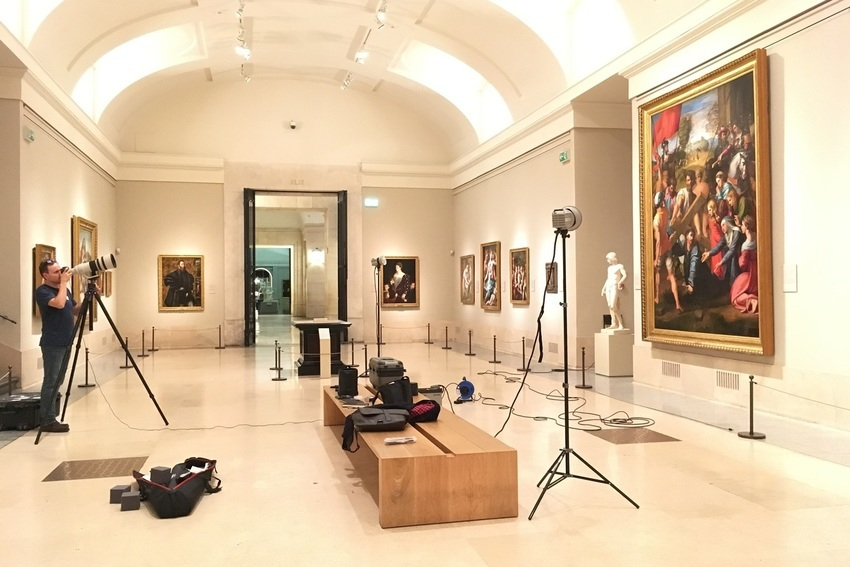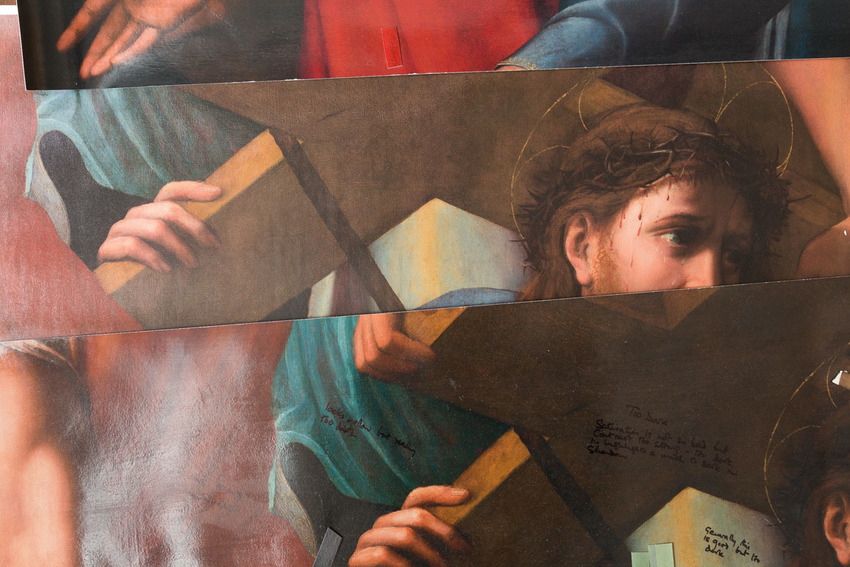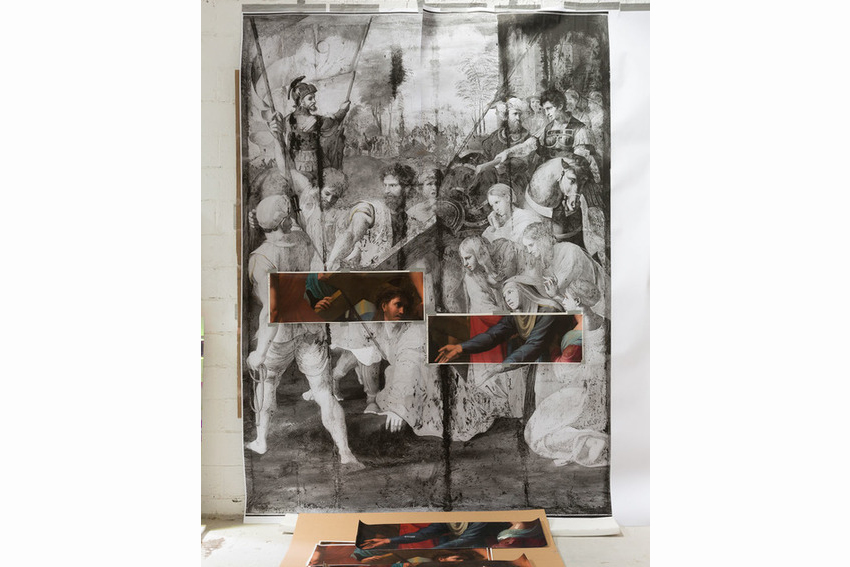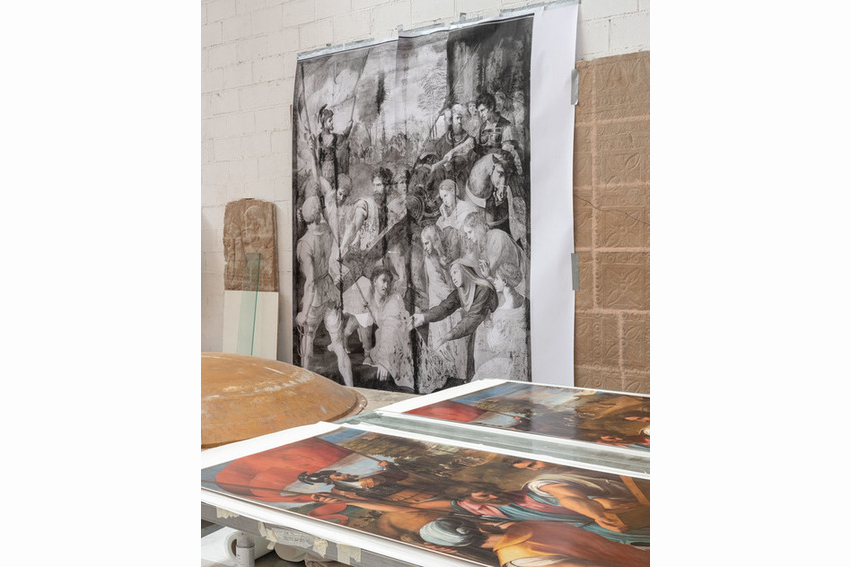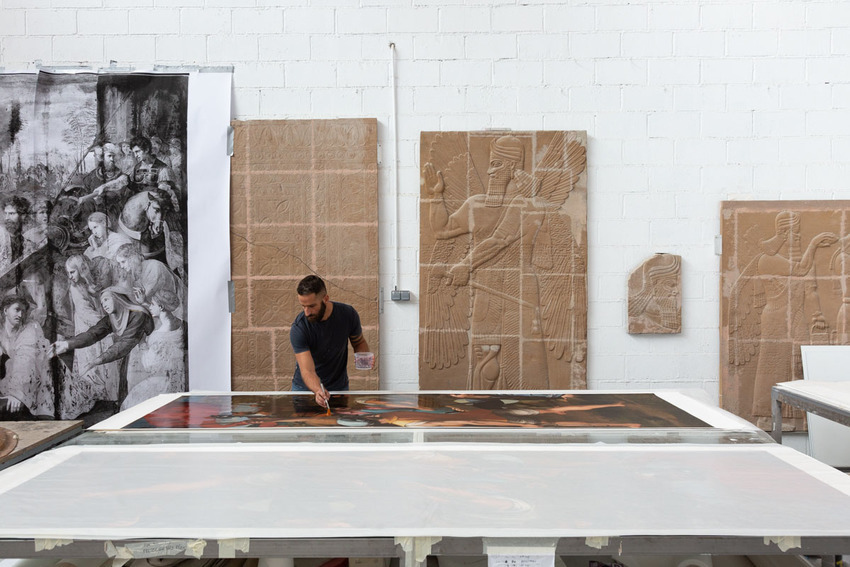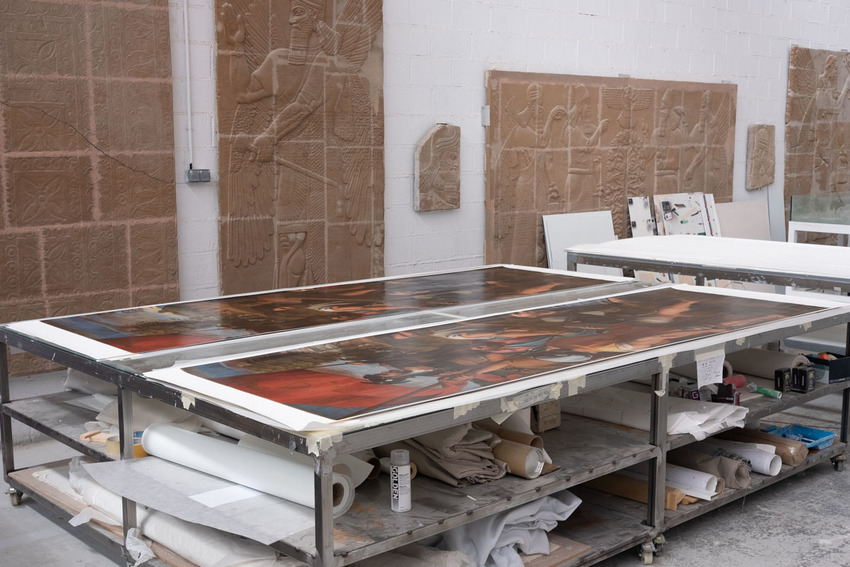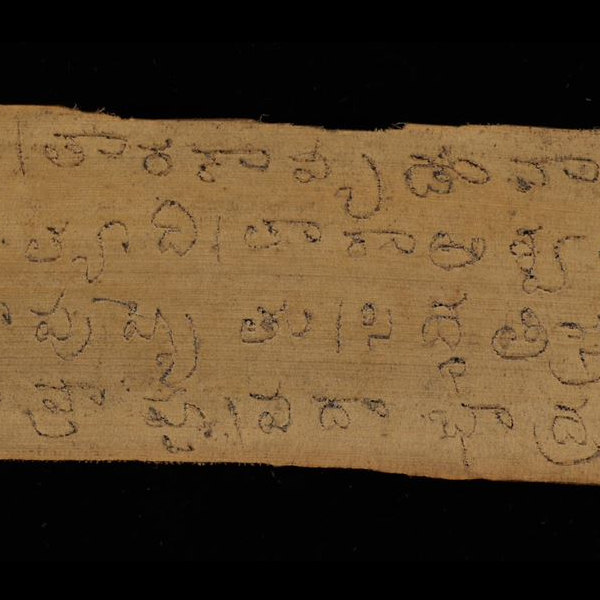
Raphael’s Christ Falls on the Route to Calvary at the Museo del Prado
“Lo Spasimo” highlights the fact that artworks, much like their authors, can have complex biographies. Painted by Raphael in Rome, legend has it that “Lo Spasimo” was shipwrecked on its way to Sicily in 1520. The painting survived and washed up near the coast of Genoa, thus conferring to it a miraculous dimension. Later, in 1661, “Lo Spasimo” was acquired by Philip IV of Spain, where it hung for a time on the main altarpieces of the chapel at the Alcázar Palace in Madrid. The painting remained in Spain until 1813, when it was taken to Paris during the Spanish War of Independence. “Lo Spasimo” was returned to the Spanish royal collection in 1819 and thereafter hung in the Museo del Prado. During its time in France, the painting was transferred from its wooden panel onto a canvas, a fact that Factum Foundation addresses with the ‘recreation’ of the painting on a rigid panel.
‘…As it was being borne by sea to Palermo, a great tempest cast the ship upon a rock, and it was broken to pieces, and the crew lost, and all the cargo, except this picture, which was carried in its case by the sea to Genoa. Here being drawn to shore, it was seen to be a thing divine, and was taken care of, being found uninjured, even the winds and waves in their fury respecting the beauty of such a work. ‘
Giorgio Vasari, Lives of the Most Excellent Painters, Sculptors, and Architects, 1568
As a result of its transfer to canvas, “Lo Spasimo” has a particular surface character – the reproduction aims to bring back the original material character to the painting. This experimental project thus combines the use of cutting-edge digital technology with craft techniques to ‘restore’ the work of art onto a rigid panel in an attempt to recreate its original support.
This project is a process of digital and physical mediation involving a series of steps: beginning with the non-contact colour recording of the original object, the process must lead to the physical restitution of the painting. In the case of “Lo Spasimo”, however, whilst the colour was accurately reproduced, the character of the resulting object differs from the original. As a result, subjective decisions were taken in order to create what could be considered a ‘new original’. Factum Foundation’s approach to the preservation of cultural heritage is based on an understanding of originality as a dynamic process, in which a facsimile can contribute to adding value to the original. The high-resolution digital data obtained from the painting’s recording processes at the Museo del Prado was also be of great value for documentation, research and dissemination.
The process of reproducing “Lo Spasimo” by Raphael is divided into four phases:
1. Recording the colour
The digital recording of “Lo Spasimo” was carried out in the Museo del Prado in November 2016 by a team from Factum Foundation. Working at night, with the museum closed to the public, Gabriel Scarpa and Anna Paula Ferrara employed high-resolution panoramic photography to capture the colour of the painting in the gallery hall. As with any project carried by Factum Foundation, “Lo Spasimo” was recorded using entirely non-contact methods, in line with our team’s ongoing commitment to the safety of works of art.
The process of recording the colour of a large painting such as this one consists in taking hundreds of high-resolution photographs from the same point of view, with a high percentage of overlap between each image. In this case, a total of 780 single shots were taken from a distance of 6 metres, using a Canon 5DRs with a Canon 600mm lens. Two flashlights were positioned forming an angle of approx. 45º with the painting’s surface. A total of 4 hours were necessary to capture an area of over 7 m2.
Factum Foundation usually combines two methods for recording paintings: panoramic photography for capturing colour and the Lucida 3D Scanner for fine surface relief. In this case, it was not necessary to obtain relief information because the texture will not form part of the reproduction. To date, the use of these two systems for recording paintings is the preferred method due to the unparalleled quality of the data.

Factum Foundation’s team using high-resolution panoramic photography © Factum Foundation
2. Data processing
The Foundation’s team stitched the images together before selecting the areas of the panorama that were in focus. The main task was to cross-check these areas with a high degree of precision in order to generate a final panorama. The work carried out to eliminate the distortions led to a high-quality image of 350ppi at 1:1 scale.
The colour was corrected using colour charts. The greyscale of the colour chart was finally placed in different areas to get an accurate exposure on the whole surface.
3. Fabricating the panels
With the Museo del Prado’s infra-red spectrograph image (taken in 2009), it became possible to appreciate the configuration of the painting’s wooden panel. A series of three roughly parallel lines cross the painting from top to bottom, suggesting that the panel was formed of four sections with varying widths. The interpretation of the IR image was used as a reference to create a panel for the recreation..
Conversations with the Prado’s conservator and an analysis of how oil-painted wooden panels from the period behave guided decision making during the production of the recreation: the original panel would not only have comprised the four sections indicated by the IR image but would likely have had a convex shape.
Based on the available information, a 3D digital model of the panel was produced and then materialised through CNC milling, using medium density polyurethane boards that were then fixed to an Alucore board for stability. A hand sanding and finish were applied to simulate the undulations and natural movements of the wooden surface.

The finished milled panel after assembling all the sections had to be sanded to smooth the surface © Oak Taylor-Smith for Factum Foundation
4. Printing the colour
The normal colour matching procedure is to print samples of the recorded data onto the same material that will be used for the recreation – in this case a substrate of fibreglass mesh as well as different grounds. The samples are taken to the museum or gallery and compared with the original painting. Notes and photographs are made so that final adjustment to the file can be done back in the printing studio.
On 9th July, Factum Foundation’s recreation was installed in its original location within the monastery of Santa Maria dello Spasimo in Palermo.


Factum’s recreation of Lo Spasimo installed in its original frame in Palermo © Factum Foundation

